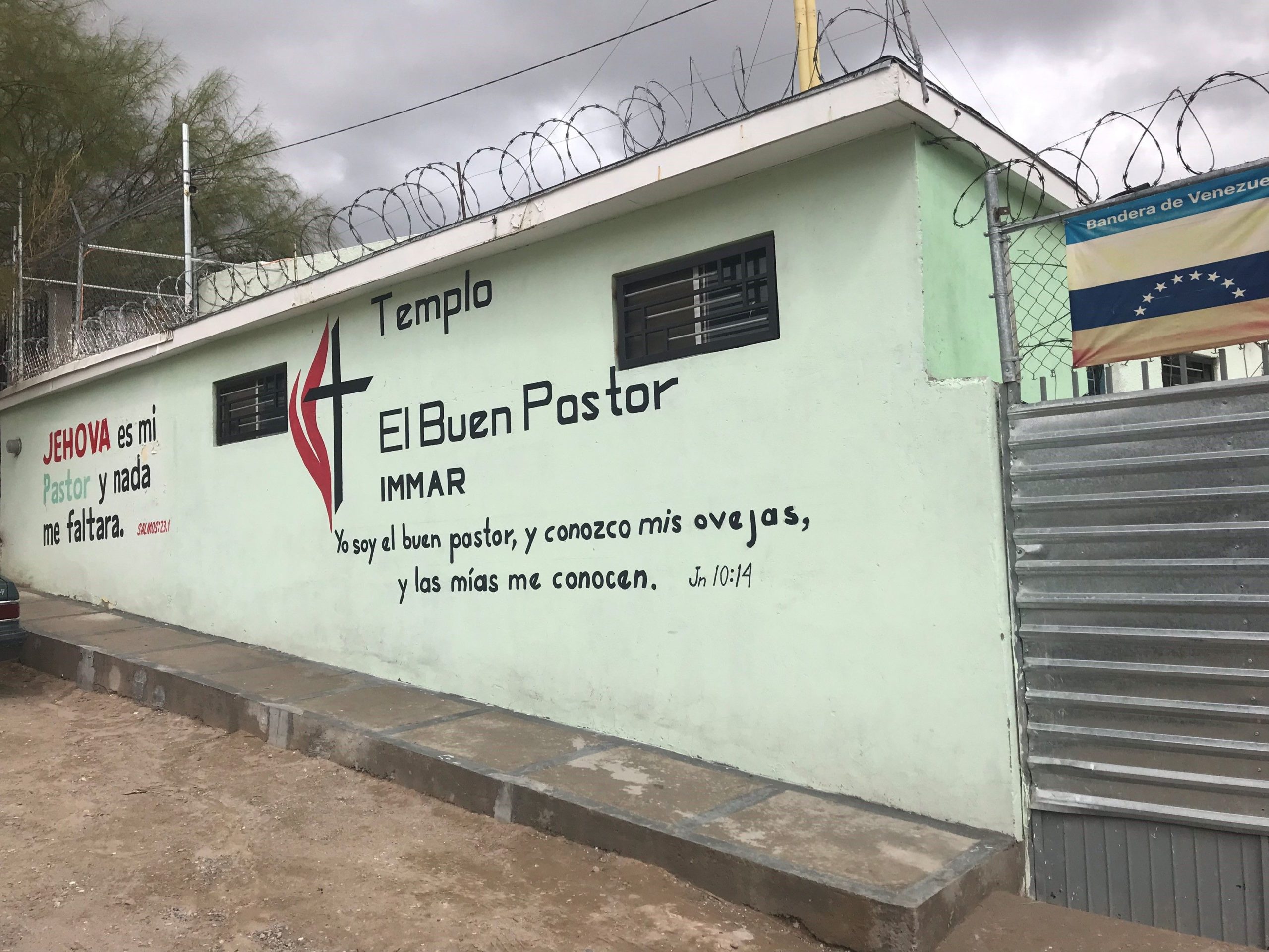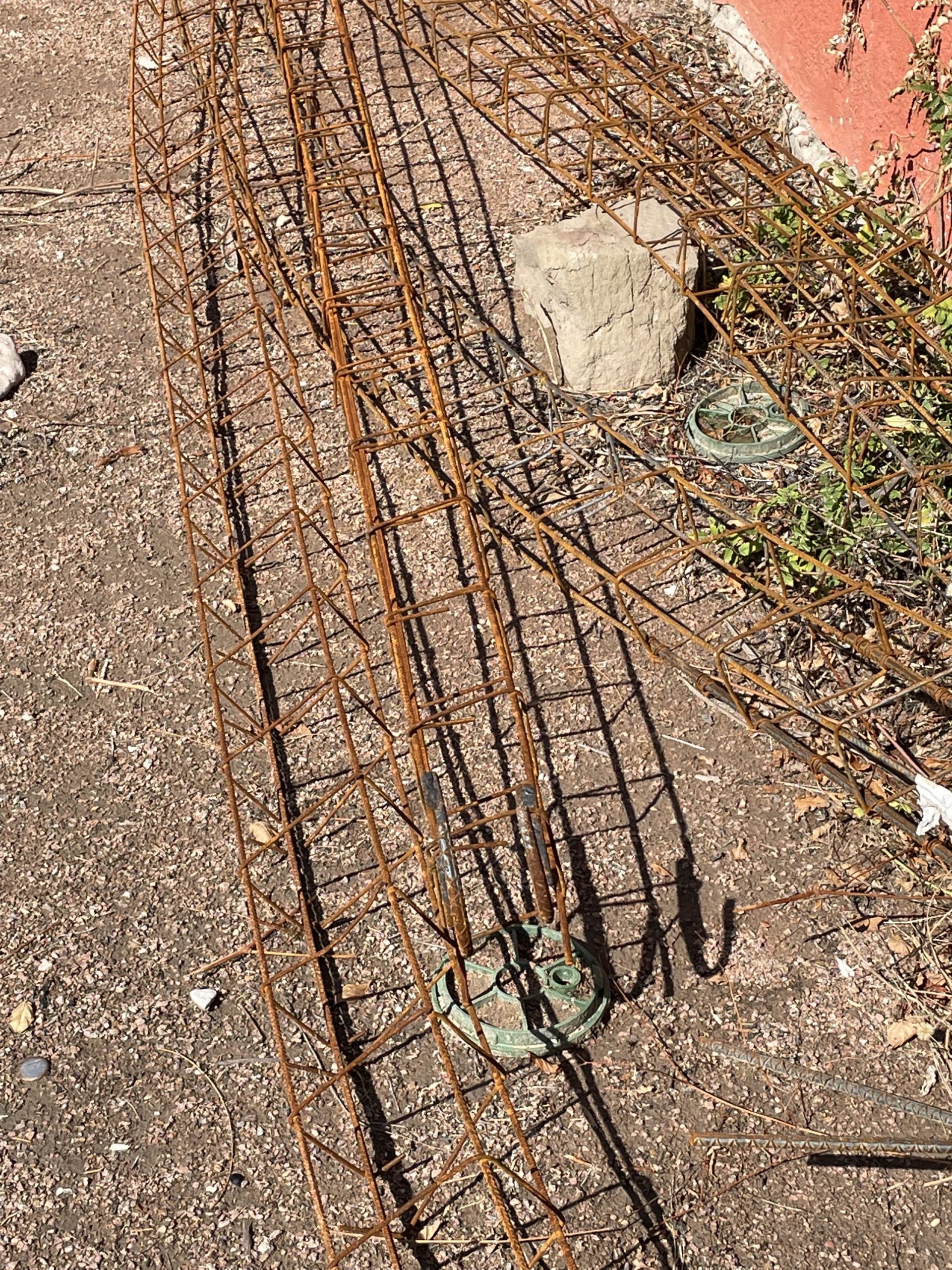If you take the winding and aptly named Scenic Drive up the Franklin Mountains at night and look out across the valley to your left, the sister cities of El Paso and Juárez blaze into life before you. From this vantage point, they could be mistaken for one city — one vibrant binational community — except for the gash of flood lights, steel bollards, and concertina wire that cuts the scene in two.
***
In late September, after years of studying and working on border policy, I was able to visit the border for the first time. I wasn’t under any illusions that a single visit to El Paso and Juárez would yield a comprehensive view of the situation. Not with two thousand miles from South Padre to San Diego, 46 official crossing points, 9 border patrol sectors; not with a great river and a scorching desert; not with 60,000 families seeking protection each month under U.S. law. What can three days teach you about all that?
But D.C. can be dehumanizing: Partisans hoping to weaponize the news for political gain. Well-meaning policy wonks stuck staring at government data dumps and charts: 219 shelters for unaccompanied minors. 27% repeat crosser rate. One million migrants expelled under Title 42.
At the border we met with pastors running shelters for vulnerable migrants in both the U.S. and in Mexico. We met with the local migration officials in Juárez, and with three seasoned Border Patrol agents in a small park in El Paso. We met with those who hear “one million migrants expelled” and can think only of individual, human stories — the woman who was forced to send her child across alone, the family who had waited in metering lines for months before the pandemic hit and the border crossings closed down.
As with any brief visit to the border, I left with blind spots — for example, we were unable to meet with migrants themselves. Nonetheless, there were valuable lessons to be learned here that I could not have gleaned from my desk in D.C. I will take them with me in my advocacy for reform, and I hope to share a few here.
A new challenge
If you listen to much of the politically charged media coverage of immigration, the situation can feel entrenched, like the battle lines were drawn years ago, the debate calcified by a string of almost-reforms that never quite found a way to pass. But at the border itself, it felt to me as if the opposite is true. The challenges — and the potential solutions — are rapidly changing. There is new ground here for compromise and for innovation.
Only a few years ago, the demographics of migrants arriving at the border began to shift from being mostly single adults seeking economic opportunity to include far more families and unaccompanied children seeking asylum. Almost everyone we spoke to at the border talked about how dramatic a change this has been even over the last two years, and how they are continuing to find new ways to respond.
The Border Patrol agents we spoke to — each of whom have spent more than a decade in the distinctive olive green — talked about how when they were trainees in a post-9/11 environment, the agency was all about chasing down bad guys in the desert. Their mission was to stop terrorists and hard drugs from crossing the border.
But now, they noted, much of their work is about rescuing asylum seekers who have come to turn themselves in. These agents, trained to secure the border against threats, now serve as the first line of welcome for unaccompanied children fleeing violence. One spoke of a post he held recently where he spent 10 hours a day in a chair processing asylum claims. Another referenced the brand-new cadre of CBP case management personnel, noting they had not yet been given the authority to assist with much beyond basic paperwork.
We heard about a similar challenge on the Mexican side of the border. Enrique Valenzuela, the official we spoke to at the local Chihuahua state migrant reception agency (COESPO), said that when more and more families began to arrive in Mexico in 2019, no one was prepared. There was no infrastructure in place, no organized network of shelters to house and protect those who were most at-risk. Pastor Fierro, who runs a migrant shelter in Juárez, said that in a span of just a few months, he went from housing 60 adult males to 280 mothers and children. The official lists of migrants waiting in newly created metering lines were kept with pen and paper by the asylum seekers themselves. COESPO was the only organizing reception agency of its kind along the border — in other sectors, the situation was even more haphazard and disorganized.

The outside of a migrant shelter in Ciudad Juárez
But a lot has changed in a short time. From a few uncoordinated shelters in Juárez, COESPO now organizes reception and placement to a network of more than 15 locations. Pastor Fierro is hard at work expanding his own space, proudly showing us a new building next to the shelter with room for more beds and a space to conduct language and employment assistance classes. In El Paso, the same: An organized shelter network — led by local faith leaders — has emerged and now works directly with CBP to help process arriving asylum seekers on the U.S. side of the border.
As demographics change, the infrastructure at our border — which was designed to treat asylum seekers as exceptions — is increasingly out of date. This is a new challenge, and communities in El Paso and Juárez have responded dynamically to create more orderly, more welcoming spaces for vulnerable migrants.
Order at the border
Despite this progress, another theme we heard again and again was the urgent need for a more orderly, more humane process for those seeking protection at the border.
For over a year, Mexican officials told us, the El Paso crossing points have been closed to asylum seekers. There is no line to get into, and no information as to when the U,S. will once again reopen its doors to the vulnerable. Paradoxically, this forces many asylum seekers — who only want to make their legal case for protection — to attempt to enter the U.S. without authorization between official crossing points. Only then can they turn themselves in and begin making legal asylum claims.
Except in many cases, they can’t even make those claims. The use of Title 42 has meant that most arriving asylum seekers since March of 2020 have been immediately forced back into Mexico without any chance to claim asylum. The expulsions happen rapidly, sometimes at the dead of night, often after a “lateral flight” to a completely different part of the border. Enrique at COESPO said he received little warning when 180 asylum seekers, including many young children, were suddenly returned into Juárez, believing they had been on a flight to Houston to continue their immigration proceedings.
He scrambled to find a safe place for that group. But some of those returned have not been able to find shelter. A Human Rights First report found 6,356 instances of publicly reported violent assaults, rapes, and kidnappings against migrants expelled under Title 42.
The policy seems designed to create chaos. It prevents asylum seekers from accessing protection, but it also encourages attempts to cross by those who really are trying to enter without inspection. There are no punishments for repeat crossing under the protocol, and as the Border Patrol agents told us, the rapid nature of the expulsions means many try to cross over and over again in quick succession.
The whole thing plays right into the hands of the cartels. The going rate is $12,000 for three trips, Pastor Fierro told us.

Discarded, makeshift ladders used to scale the border wall
Title 42 remains in place. Just recently, the Migrant Protection Protocols (MPP) were reimplemented after a court order. But for Enrique, COESPO and many others involved at the border, these are not real solutions: “Our main challenge,” he said, “is to eventually determine a local mechanism under which people seeking international protection in the U.S. may be able to enter through an authorized port of entry to state their case before proper authorities.”
***
Despite the wall cutting through, El Paso and Juárez remain two cities entwined. We were lucky to see the border from the perspective of those on both sides — and from those who patrol along the dividing line. There is no full understanding the situation there without hearing from all of these perspectives and many others.
I left the border with renewed hope. The specific challenges we face there are changing, and this binational community is rising to meet them.
But I also left convinced of the need for policy reform. Can we find a way to open ports of entry to asylum seekers? Can we move personnel to help process asylum seekers while CBP secures the border? And can we find a more orderly, more humane process to replace Title 42 and MPP?

